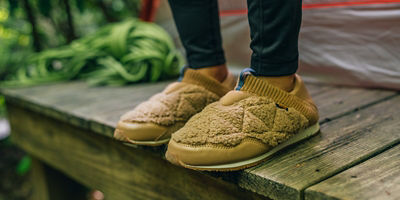
Car camping is a quintessentially American pastime. Because you’re using a car to drive right up the campsite, it’s both low-effort and high-reward. And because it’s an overnight endeavor, it gives you the opportunity to completely disconnect, relax, and get a full mental reset while immersed in nature.
The other good news is that there’s no one right way to plan a car-camping trip. You can turn it into a family affair if you have little ones, or you can use your camping skills to secure low-cost lodging at a music festival or other outdoor event. You can hang out in camp all day, playing games and building campfires, or you can use your campsite as a launching pad for day-hikes and other outdoor adventures.
Likewise, there’s no one right way to be a car-camper: You can go solo or with a group, and at pretty much any age or fitness level. All you need is a vehicle, some basic equipment, and a little camping know-how. Here’s how to get started.
The Basics
The beauty of car camping is that you can bring most of the comforts of home with you. While you can find plenty of comprehensive packing lists online, these four items are the must-haves.
Tent
Your home away from home, a good car-camping tent is the cornerstone of your camping experience. While some campgrounds offer cabins or three-sided shelters for visitors, a tent will give you far more options when it comes to choosing a campsite. Ideally, look for a freestanding tent that’s roomy, easy to set up, and suitable for the weather you expect to encounter. (Alternatively, you can also sleep in a hammock, but you’ll need a tarp, underquilt, and other gear to protect you from the elements.)
Sleeping pad
Many first-time campers underestimate just how critical a sleeping pad is. When you lie in your sleeping bag, all the insulation beneath you compresses flat. Unless you have a good pad, you’ll be left with nothing between you and the cold ground. Side-sleepers will probably want a cushy inflatable sleeping pad, while back sleepers can sometimes get away with less-expensive foam pads.
Sleeping bag
Sleeping comfortably starts with choosing the right sleeping bag. Make sure it’s the right size for you and that it’s rated to keep you warm in the coldest temperatures you expect to encounter. Note that women’s bags are often warmer for the stated temperature rating, so if you sleep cold, opt for a women’s bag.
Cookware
Cooking under the stars is one of the best parts of the camping experience. While skilled camp chefs can successfully cook over an open fire, most folks will find it faster, easier, and more fun to cook over a camp stove with a set of outdoor-specific pots and pans.
Apparel
Insulating jacket
The warmer your jacket, the longer you can stay out among the stars when temperatures start to drop. Down puffers offer better packability and longevity, while synthetic jackets tend to be less expensive (and more effective in wet weather).
Rain gear
Rain will never ruin your trip if you’re properly equipped. Always pack rain gear (preferably both a jacket and rain pants), which will help you keep warm and dry while you hang out, cook, or play games in camp.
Base layers
Most seasoned campers wear base layers in their sleeping bags—both to protect the inside of the bag from skin oils and sunscreen and to maximize warmth. Wool or synthetic base layers are also a staple for hiking in cooler weather.
Hiking shoes
You can use any comfortable sneaker or outdoor shoe for camping, but hiking shoes offer a good mix of comfort, durability, and versatility. If you expect temperatures to drop significantly overnight, opt for a boot with a leather upper and/or a little insulation.
Safety Gear
First-aid kit
This is a must for any outdoor outing. You can buy a custom-made kit or assemble your own. Just make sure you know everything that’s in the kit and understand how to use it.
Fire blanket
Every camping area has its own fire safety regulations. Some ask that you build fires on a fire pan to protect the ground from scorching. Some require you to bring your own wood, while others ban this practice since pest insects sometimes hide out in firewood. Check regulations before you go, and always have a big bucket of water and a fire blanket on hand in case the flames get out of hand.
Communication device
If you’re camping in an area without cell service, consider packing a satellite communication device or personal locator beacon. That way you’ll be able to call for help in case of emergency.












